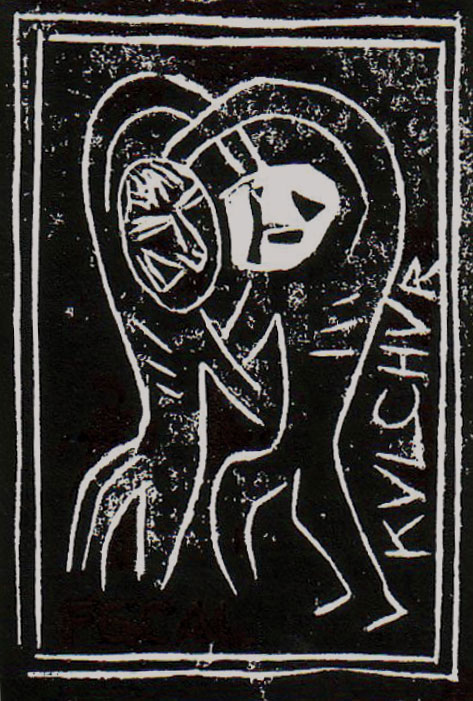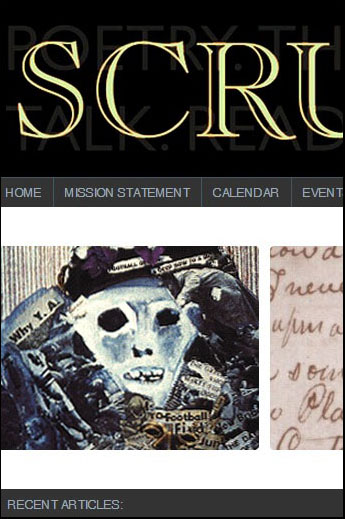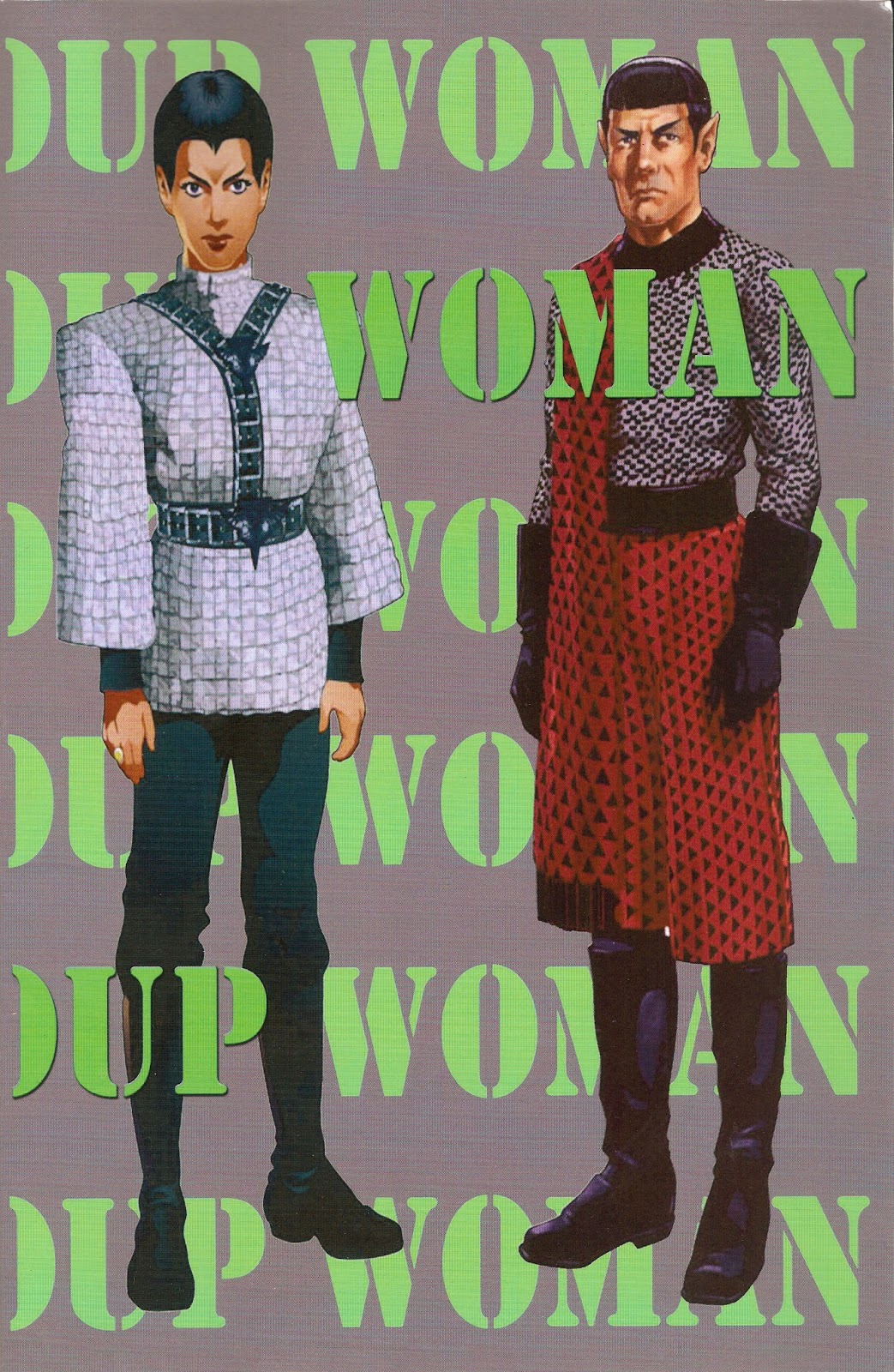NOTES ON YELLOW FIELD FOUR (FALL 2011)
Buffalo-based poet and collator Edric Mesmer — who I was surprised and thrilled to see contributed an engaging comment on Harriet Tarlo's anthology of contemporary landscape poetry The Ground Aslant (Shearsman 2011) to the Dec/Jan issue of The Poetry Project Newsletter — has recently brought out the fourth issue of Yellow Field, a large-format (8.5" x 11") mimeo-style print journal of Anglophone poetry. This fourth number is astounding and what most immediately strikes me is the broad reach of the thing. The ambitiously catholic constellation of geographically dispersed contributors include: Adachi Tomomi (Japan), Siobhan Hodge (Australia), KG Price (Chicago), Andy Spragg (UK), Jeremy Balius (Dallas), Scott McCarney (Rochester, NY), Anne Reed (Buffalo), Tyrone Williams (Cincinnati), Drew Milne (UK), Eric Selland (San Francisco), Mark Dickinson (the Orkney Islands), Eva Shockley (New Brunswick, NJ), Rachel Blau DuPlessis (formerly Philly, now I believe NC), Amy Pence (Atlanta, GA), Jo Cook (undisclosed) and Mesmer (Buffalo). But against, or more likely through, the generosity of such a wide net, the whole of the journal has a clear and no doubt carefully curated shape.
My crude gut sense of the thing may be wrong, but this fourth number of Yellow Field seems somehow dominated by right angles. From the cover image (rigidly arranged silhouetted profiles of student and faculty heads drawn from a 1934 issue of The Lafayette Oracle, Lafayette High School in Buffalo), to a series of stunningly immaculate, delicate and precise graphic scores from Japanese composer Adachi Tomomi to Drew Milne's visually oriented "Embrasures" and so on, throughout the whole of the number. But this sense is wrong. The number is dominated by music, or at least visual scoring. KG Price, who performs with the Chicago Scratch Orchestra (named, I suppose, after the ensemble Cornelius Cardew collaborated with) offers a musical score titled "Departure" which looks strikingly similar to the scores Cardew produced during his "avant-garde" period (i.e. Treatise), but unlike Cardew's scores which were characterized by mechanical precision, Price's are rough in appearance, clearly hand drawn with text for voice appearing at various points throughout (i.e. "to a car she now owns").
 |
| Adachi Tomomi | Score for Tenor Sax | 4th of 5 in "Chinese Character for Instrument" |
Adachi's scores, on the other hand, maintain all the mechanical precision that might be found in Cardew's earlier work, but none of the fluidity or contingency. The work is instead mercilessly rigid. And in this series of five visual scores offered by Adachi, the most rigid is the final score, which is characterized by a terrifying inflexibility. The sequence is titled "Chinese Character for Instrument" and, according to Adachi's prefatory note to the work, "All elements of scores consist of zoomed, reversed and/or superimposed Chinese characters (Mincho-tai font), which only expresses the instrumentation as their titles describe. If the title is 'For Piano,' the word 'Piano' is translated in our understandings about the instrumentation/instrument visually because a Chinese character is an ideogram." Unlike Japanese, which has a distinct set of characters for phonetic inscription, the various modalities of Chinese text are ideographic — but not entirely or at least not in the way a cultural complex like the Pound-Fenollosa Consortium imagined it (cf. Yunte Huang's or Jonathan Stalling's work on Pound and the Chinese). And so I find it difficult to take Adachi's prefatory introduction to his scores at face value and I suspect there may be a critique of Western imaginings of East Asian culture implicit in the work. Whether or not this is the case, the sequence moves through five individual scores: the first for flute, the second for harmonica, radio and stone, the third for trumpet, the fourth for tenor saxophone, and the fifth for orchestra. As the sequence progresses it does so in a gradated sweep, from a single instrument to an entire orchestra such that the scoring on the first of the series (for flute) is the sparsest score and offers the most negative space on the page while the final score in the sequence (for orchestra) is the densest, leaving the least white space on the page. In any event, as the sequence progresses there is a sense of "crowd out," an increasing and somewhat ominous occupation of space that may demonstrate a form of overaccumulation, something I've been thinking a lot about lately. But crowd out, in the financial sense, as a reduction in private spending effected by a rise in interest rates, is not likely during moments of unusually high unemployment. Maybe, instead of crowd out, just blackout, as the final score in Adachi's sequence suggests. Here the negative space, the silences, become precious and incredibly desirable, because there are so few of them. In this final score they become the stars that steer through what one can only imagine is an unbearable cacophony, a manic racket motivated by overwhelming conditions.
 |
| The first of Drew Milne's five "Embrasures" |
Here Mesmer's editorial juxtapositioning, what he would insist is more appropriately understood as collating, is masterful. Immediately following the last of Adachi's five scores are five of Drew Milne's "Embrasures." Their visual construction reminds me at first of Eugen Gomringer's "Silencio" or "Schweigen." The text in the upper part of the page is arranged with an interior cube, the outer shape of which looks something like a cross (more like the symbol identified with the Red Cross than a crucifix). The topmost text in the first of the five "Embrasures" begins, "here an almshouse there | a palladian disability unit." The text on the interior of the cube in this first piece is aligned left and reads, "care | shed | tree | folly." At bottom, arranged as something of a footnote appended to the text above, is the following passage:
Cushion Capital. A cubical capital, also block capital, sculpted to suggest a cushion weighed down by its entablature. A name given to Romanesque church capitals cut away on four sides leaving vertical faces. Bank vernacular for the buffer of liquid assets set off against the haircut value of securities at risk of delay in the realisation of liabilities.
The polyvalence of the term "Cushion Capital" seems to offer something of a nodal point here, articulating the contemporary (financialized) world with the ancient, language (the authority of capital letters inscribed in stone) with political economy, all of it more an almshouse rather than a prison house, or at one and the same time both imagined as a cushion. And so, while visually these "Embrasures" may remind us, somewhat lazily, of Gomringer or Brazillian concrete poetry, their construction and the labor they perform refuses any pretense toward minimalism or simplicity; but these pieces do, however, seem to insist on rigidity, or the rigidities embedded in financial, political and cultural flexibility.
This fourth issue of Yellow Field closes with an incredibly perceptive comment from Mesmer on Susan Howe's September 2011 performance in Buffalo with composer David Grubbs, with whom Howe has been reading Souls of the Labadie Tract. The whole of Mesmer's comment on the performance is wonderfully constructed, split into two parts, and two passages in particular strike me. The first:
A "path": colony shares its root with culture, cult, couture. The space of sound is assuaging the blank indifference between the ghost of text and text — an invented or reinvented ghost, now embodied in fragmented, spirit of reconnoitering tracts. The titanium plated keys, our evidence of modernity, are adjusting alphanumerically, justifying voice in flective nonaccompaniment: "this place shields". At times the reader's voice is echoed: a traipsing technology — a knowledgeable deployment in the diphthong of time.
And the second passage:
Architecture inhabited as though by a haunting, Howe's text [Labadie Tract], as mentioned, largely comes from actual collages of [Hannah Edwards] Wetmore's diaries, composed visually on the page; thus the reading as chirpings of sound, staccato. And whisperings: "and was ready!" When asked how to read such collaged pages, the poet answers "It made itself sound." The aurality of the visual is something Howe herself claims "isn't even me," confessing that she felt the text was a channeling of Wetmore, though she hates "to sound hokey."
I recall here Sean Bonney's essay on Geraldine Monk (the one included in the Salt Companion) that situates Noctivigations (West House 2001) as a book that, through its interest in witchcraft and the occult, offers one among many modes of response to a common source of violence generated and reproduced by and through a very specific set of material conditions that cut across the centuries, however much they might change. Thinking along these lines, I sense Howe's future-oriented gaze toward the enduring specters of long lost congregations or the ghosts of violently transgressed figures isn't "hokey" at all. In any case, by documenting and commenting on Howe's performance, Mesmer has provided something I find incredibly valuable. And the overriding theme of scoring, an effort toward thinking the otherwise intractable relationship between the visual and aurality, the text and orality, lends to the whole of the journal an extraordinary shape.
Yellow Field. yellowedenwaldfield@yahoo.com. 1217 Delaware Avenue, Apt. 802, Buffalo, NY 14209.







<< Home